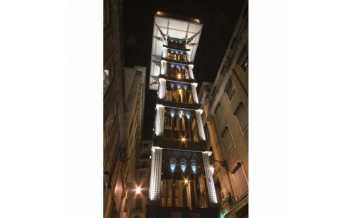"By day Lisbon has a naive theatrical quality that enchants and captivates, but by night it is a fairy-tale city, descending over lighted terraces to the sea, like a woman in festive garments going down to meet her dark lover." - Erich Maria Remarque, The Night in Lisbon.
Spread across the hillsides that overlook the Rio Tejo is the colourful cityscape of Lisbon, where gothic cathedrals, majestic monasteries and white bleached limestone buildings are lit up by the all-year-round sunshine (Lisbon boasts one of the mildest winters in Europe!). Portugal’s capital is the oldest city in Western Europe and one of the oldest in the world. It predates London, Paris and Rome by several centuries and its streets are dotted with reminders of its rich and varied past.
The city is divided into barrios (districts) according to their historical culture and architectural landmarks. The Islamic influence on the city can be seen especially in Alfama, the oldest quarter of the city, where place names are derived from Arabic as Lisbon was taken over by Muslim forces in the 8th century and they ruled the city for over 450 years. Then, in the 16th century the city enjoyed great prosperity and flourished thanks to its exploitation of the trade in spices, slaves and sugar. Many of the city’s most iconic landmarks, such as the UNESCO world heritage sites, the Jerónimos Monastery and the Belém Tower, are a testament to this time and can be found in the barrio of Belém.
However, Lisbon’s interest doesn’t just lie in its history; it is one of the most important growing financial centres on the continent. Sitting side by side with the monumental quarter of Belém is the modern area of Parque das Nações which is the newest district in Lisbon. It emerged from an urban renewal programme leading to the World Exhibition of Lisbon 1998. Similarly, in The Chiado district you will find a shopping haven, and Barrio Alto is home to the city’s hip underground music scene, eclectic boutiques and bars, and nightlife until dawn. And if you want to take a break from the bustle of Lisbon’s historic streets, you can find a slice of paradise in Monsanto Forest Park, which at 10km square is one of the largest in Europe.
It is no wonder that Lisbon Airport serves 16 million people annually – visitors can relax in the city’s parks, gardens, belvederes, cafes and esplanades and all under the warm Mediterranean sun.
A day in Lisbon
Activities
-
Avenida da Liberdade, Lisbon
Inspired by the Champs-Elysees in Paris, Lisbon’s classiest boulevard is rich...
-
-
Calouste Gulbenkian Museum, Lisbon
The permanent exhibition galleries are distributed in chronological and...
-
-
-
Castelo de São Jorge, Lisbon
The castle is one of Lisbon’s most emblematic landmarks, strategically placed...
-
Jerónimos Monastery, Lisbon
The monastery is a striking example of the Manueline style of architecture....
-
Mundo Fantastico da Sardinha Portuguesa,...
The Fantastic World of Portuguese Sardines is a unique souvenir shop in the...
-
Padrão dos Descobrimentos, Lisbon
This striking monument was designed to commemorate the Portugese Age of...
-
Palace of the Marquises of Fronteira, Lisbon
A Portuguese palace still inhabited by the current Marquess of Fronteira.
-
Park and Palace of Monserrate, Sintra
The Park of Monserrate, in Sintra, which includes one of Portugal’s richest...
-
Ponte 25 de Abril, Lisbon
Often considered as a twin sister to the Golden Gate Bridge in San Francisco,...
-
Praça do Comércio, Lisbon
For centuries the plaza has been a hive of activity and a focal point of the...
-
Sanctuary of Christ the King, Lisbon
Built in the 1950’s and inspired by the Christ the Redeemer statue in Rio de...
-
Santa Justa Lift, Lisbon
Situated at the end of Rua de Santa Justa, it connects the lower streets of...
-
Torre Vasco da Gama, Lisbon
Its shape evokes a nautical sail, and at 145 metres high, it is Lisbon's...





















